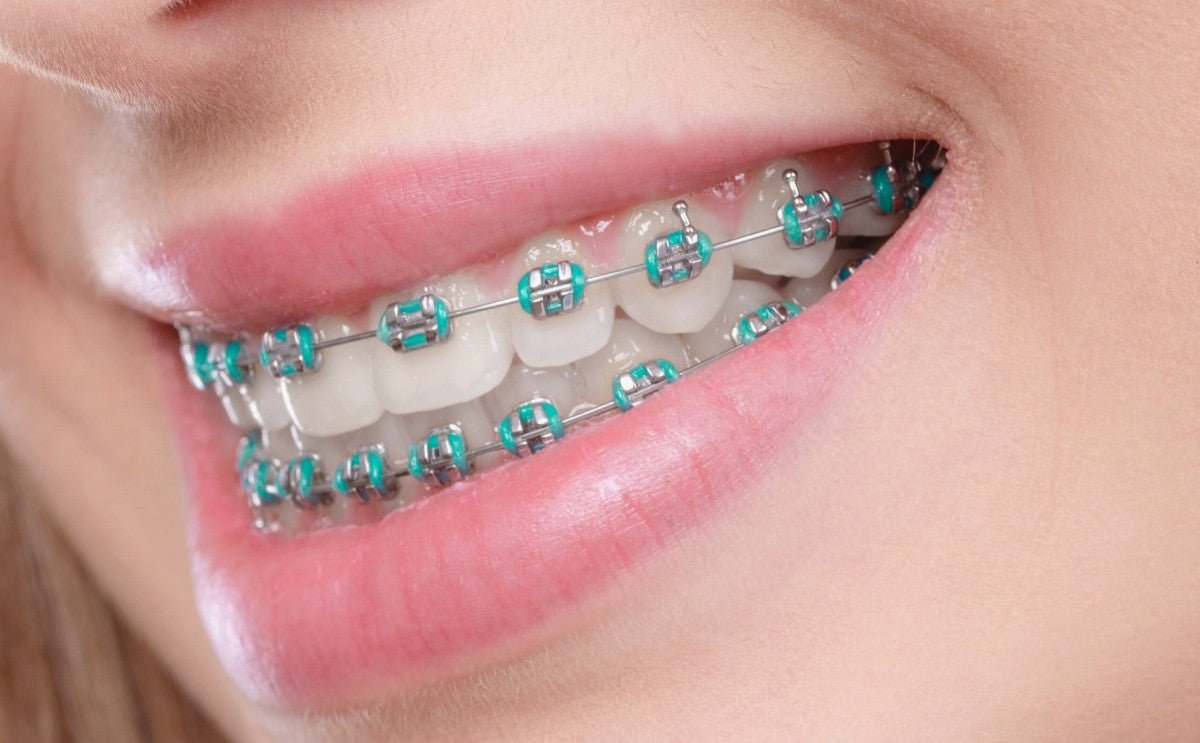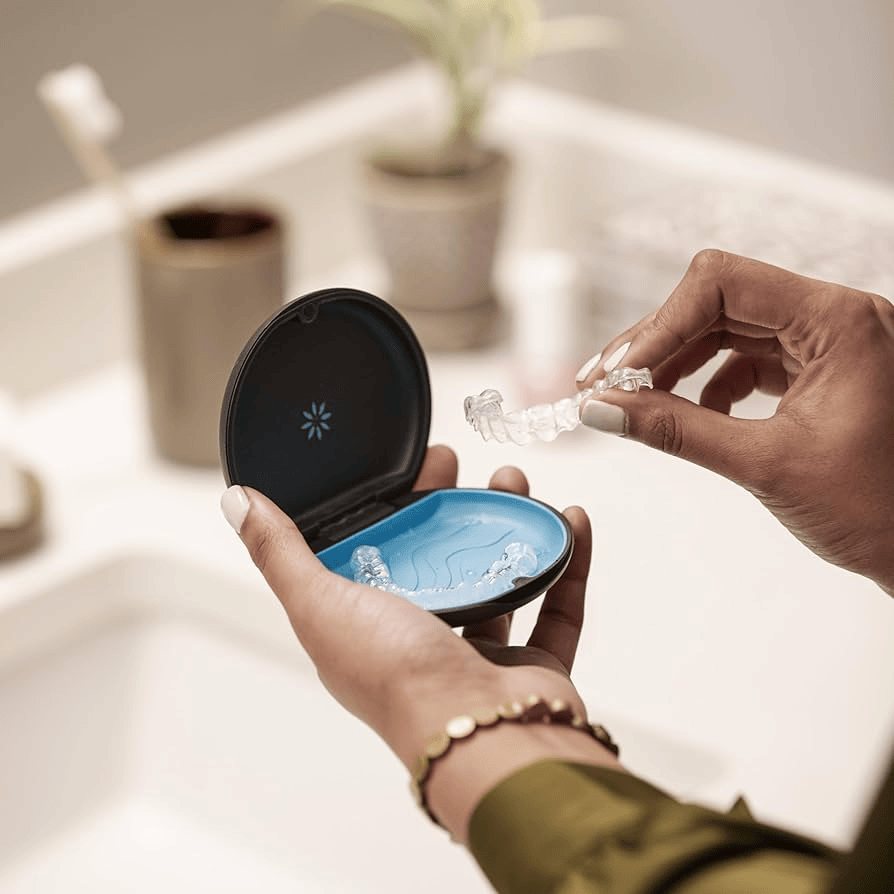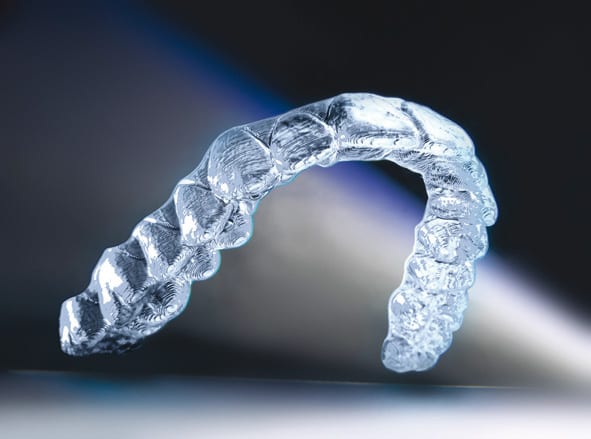Braces are built to last, but even the most durable appliances can take a hit. Whether from a hard bite, a sticky snack, or an accidental bump, a broken wire or loose bracket is a common issue during orthodontic treatment. While these moments aren’t emergencies, they do require proper attention to avoid discomfort or treatment delays.
Table of contents
Broken or Losse Bracket from Braces
Is a Loose Bracket an Orthodontic Emergency?
A loose or broken bracket is rarely a serious emergency, but it’s not something to ignore. Brackets can come loose for several reasons, most commonly from eating hard or sticky foods, bumping the mouth, or applying pressure by playing with the appliance. A broken arch wire can also cause brackets to shift, loosening their grip on your teeth.
In most cases, braces will continue to work even with a missing bracket—but that doesn’t mean you should wait weeks for a fix. While you won’t need to rush to an emergency room, you should contact your orthodontist within a few days to schedule a repair. Quick action helps prevent added discomfort or unwanted tooth movement, keeping your treatment on schedule.
Wire extends beyond the back bracket as teeth move
Archwire becomes displaced from a bracket
Wire bends due to chewing or trauma
Thin ligature wires shift or loosen
Why Orthodontic Breakages Happen
Most orthodontic breakages can be traced back to eating habits or lifestyle risks. Hard, crunchy, and sticky foods top the list of culprits. Even one bad bite into popcorn or taffy can strain the adhesive holding brackets in place or warp the arch wire guiding your teeth. Non-food habits, like chewing pencils or using toothpicks too aggressively, can also contribute.
Other causes include contact injuries during sports, especially when a mouthguard isn’t worn. Rough play or falls can easily dislodge components of your braces. Even food buildup around brackets, if not properly cleaned, can cause wires to shift or adhesives to loosen. Preventing breakages starts with understanding these risks—and being intentional about minimizing them.
Chewing hard, sticky, or crunchy foods
Using teeth as tools or chewing on objects
Playing contact sports without a mouthguard
Improper brushing or cleaning around brackets and wires

When to Call Your Orthodontist
If a bracket, wire, or band breaks—or if you're unsure what's wrong—don’t wait weeks to mention it at your next appointment. Even minor damage can interfere with your treatment plan if left unaddressed. Prompt repairs help ensure your braces continue working as planned—and keep your treatment on track.
Contact your orthodontist right away if:
A wire is poking into your cheek or gums
A bracket has completely fallen off
The wire appears bent or is no longer guiding your teeth
You’re experiencing ongoing discomfort or bleeding
How to Protect Your Mouth Until You See an Orthodontist
If something breaks, your first priority is protecting the inside of your mouth. A loose bracket or exposed wire can cause sores, cuts, and irritation on your tongue, cheeks, or gums. While most issues don’t need emergency care, you may need to perform a quick at-home fix to stay comfortable and prevent further damage.
Always start by washing your hands and sterilizing any tools you use. If you feel unsure or the damage looks severe, contact your orthodontist before attempting any adjustments. Below are common scenarios and what you can do temporarily to manage them.
Floating Bracket (Detached from Tooth but Still on Wire)
A bracket that comes loose from the tooth but stays on the arch wire can rotate or slide, creating discomfort. Although it may not stop your braces from working entirely, it can irritate the inside of your mouth and eventually interfere with tooth movement if left untreated.
Sterilize a pair of tweezers
Gently slide the bracket between two teeth or to the center of a tooth
Rotate it so the flat part faces the right direction
Cover it with orthodontic wax to prevent irritation
Call your orthodontist to schedule a reattachment
Broken Arch Wire
A broken arch wire can cause sharp metal to poke into your cheeks, lips, or gums, increasing the risk of bleeding or infection. Until the orthodontist can replace the wire, a careful trim may be necessary to avoid injury.
Use nail clippers or small wire cutters to trim the wire flush with the bracket
Place a clean tissue inside the mouth during clipping to avoid swallowing any fragments
Apply wax to any exposed ends
Contact your orthodontist to replace or adjust the wire
Wire Protruding from the Last Bracket
Sometimes, as your teeth shift during treatment, the arch wire can slide out of the last bracket. If it starts poking the inside of your cheek, it may cause pain or even create a sore if not handled quickly.
Try pushing it back into place with a cotton swab
If that doesn’t work, clip the wire carefully with sanitized nail clippers
Cover sharp ends with wax
Book an appointment to have the wire repositioned or replaced
Bent Wire
When you bite into hard food or take a hit to the mouth, your arch wire can bend out of shape. A bent wire distributes force incorrectly, which may slow down your treatment or move teeth in the wrong direction. Unlike a simple protrusion, bent wires need to be corrected professionally.
Do not try to bend it back
Contact your orthodontist immediately
Avoid hard foods until the wire is checked
How to Care for Sores or Cuts Caused by Braces
It’s not unusual for braces to cause irritation inside the mouth—especially after an adjustment or if something is out of place. When a wire or bracket rubs repeatedly against your cheek or gum, small cuts or ulcers may form. These are usually minor but can be uncomfortable if not treated.
Orthodontic wax is a reliable first step. It provides a smooth barrier between the metal and your mouth. For added relief, saltwater rinses can cleanse the area and reduce inflammation. Avoiding sharp or spicy foods will also help the area heal faster. If the sore persists for more than a few days, contact your orthodontist.

Apply orthodontic wax over sharp or irritating areas
Rinse with warm salt water multiple times per day
Use antiseptic or numbing gels for temporary relief
Stick to soft foods and avoid overly hot or cold drinks
Oral Hygiene Is Critical
When it comes to making braces work effectively, hygiene is non-negotiable. Broken brackets or wires can complicate cleaning, but that’s when brushing and rinsing become even more important. Without proper care, food and plaque buildup can slow tooth movement or lead to decay around brackets and wires. Staying diligent helps keep treatment on track—and your mouth healthy.
Rinse and brush after meals
Keep brackets and wires clean
Attend all scheduled appointments
Is a broken bracket an emergency?
Not typically, but it does require timely attention. A broken bracket isn’t a dental emergency unless it’s causing pain, bleeding, or interfering with your bite. However, leaving it untreated can slow your treatment progress or lead to wire displacement, so it’s important to contact your orthodontist for an emergency repair appointment.
Are ceramic brackets more likely to break than metal ones?
Ceramic brackets are strong, but slightly more brittle than traditional metal brackets. They can be more prone to chipping or detaching when exposed to sudden impact or stress from hard foods. If aesthetics are important but you're concerned about durability, your orthodontist may recommend hybrid systems that combine ceramic fronts with metal brackets in the back.
What should I do if my child breaks a bracket at school?
If your child reports a broken bracket while at school, encourage them not to touch or wiggle it. If discomfort is present, they can apply orthodontic wax (if available) or notify the school nurse for help until you can assess the issue. Contact your orthodontist after school hours to schedule a repair and determine if an emergency visit is necessary.
What happens if I don’t repair a broken bracket?
Delaying a repair can disrupt the way force is applied to your teeth, potentially slowing progress or causing unwanted tooth movement. In some cases, it may even extend your overall treatment time. It’s best to schedule an emergency appointment as soon as you notice the break so your orthodontist can make the necessary adjustments.
Time to Book?
A floating bracket or broken wire doesn’t require panic—but it does need follow-up. If you’re experiencing ongoing discomfort or can’t resolve the issue at home, you’ll likely need to schedule an emergency orthodontic visit. This type of appointment is separate from your regular adjustment and is meant to address urgent concerns like exposed wires, loose brackets, or hardware that’s causing pain or interfering with your daily activities.
Waiting until your next scheduled visit may prolong discomfort or lead to complications in your treatment progress. Your orthodontist can quickly assess the situation, fix your broken bracket, and get you back on track with minimal disruption.






